

Max Davies
2026 Toyota HiAce review
4 Hours Ago
Say hello to the Subaru Forester Sport, featuring more... sport, at least visually. As for more power? Well, you might be disappointed...
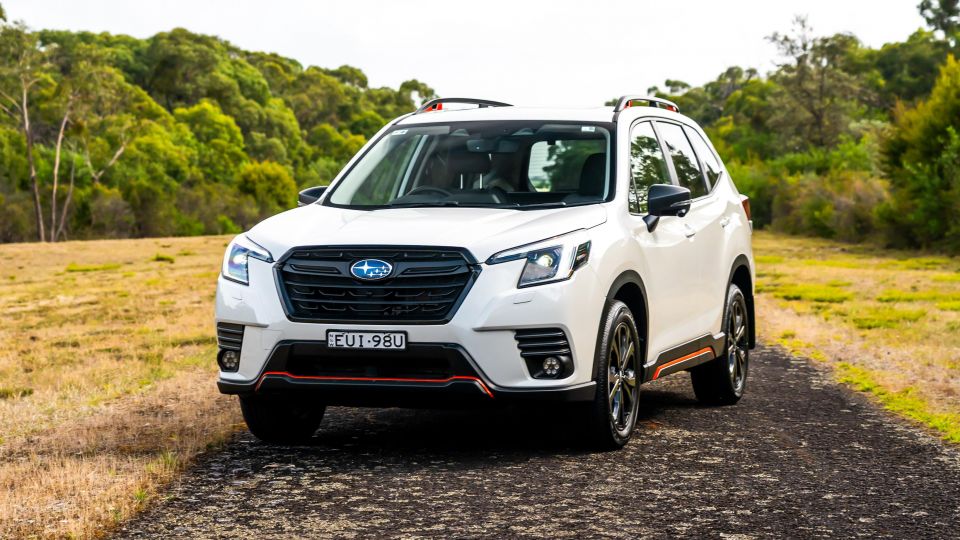
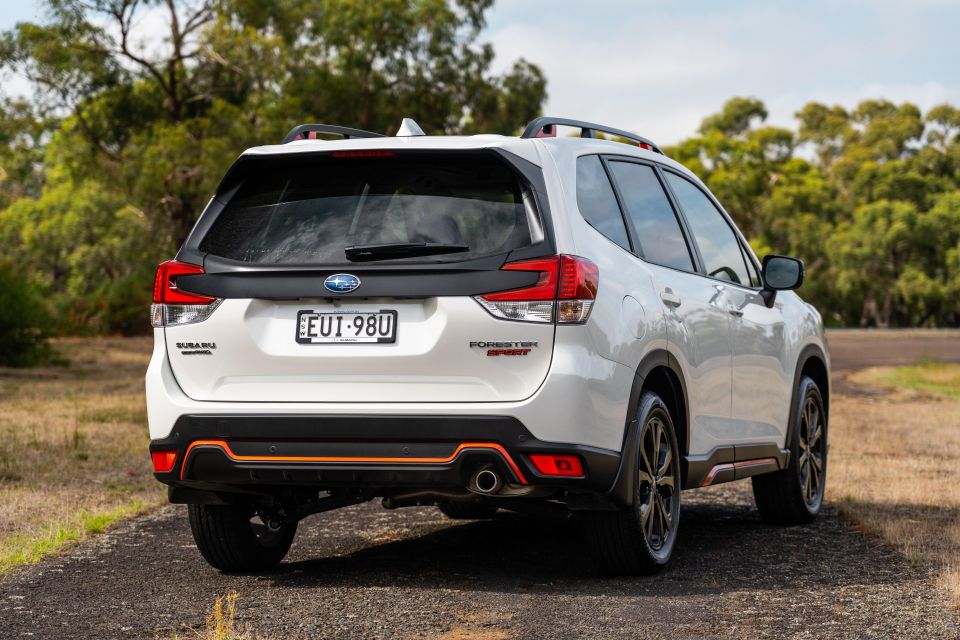

Quickly see how this car stacks up against its competition. Select any benchmark to see more details.
Where expert car reviews meet expert car buying – CarExpert gives you trusted advice, personalised service and real savings on your next new car.
The Subaru Forester is safe, spacious, and well priced, but it’s not particularly sporty.

The new Forester Sport is out to change that. Not with more power or a sportier suspension tune, but with a new look and an interior filled with interesting materials. Like orange? This could be the Forester for you.
Under the skin, the Sport features the same updates applied to the broader Forester range in 2022.
While the looks remained largely the same, the mid-life tweak brought updated infotainment technology and a range of tweaks to the suspension and body structure.
Subaru says the front coil springs and dampers were retuned to improve both ride comfort and handling, and new aluminium engine mounts cut down on vibrations in the cabin.
It’s been a rock solid option in a competitive segment since launch. What does the Forester have to offer in 2023?
The Forester Sport sits close to the top end of the range, with a sticker price of $44,840 before on-road costs.
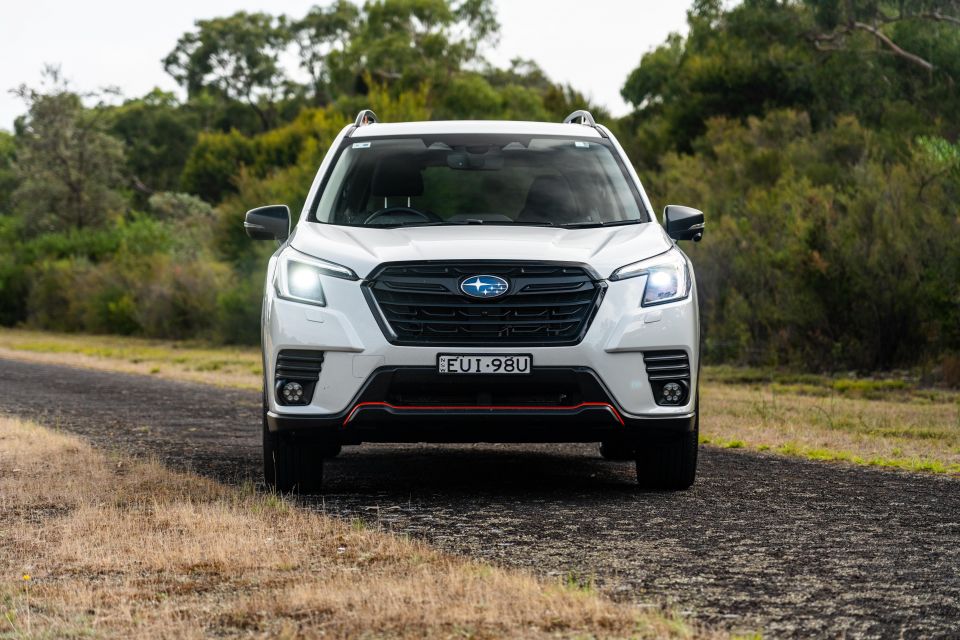
It’s priced in line with the Mazda CX-5 Touring Active AWD ($44,000), and the Toyota RAV4 GXL 2WD ($44,100). It also takes on the Honda CR-V VTi LX ($53,600 drive-away), Hyundai Tucson Elite AWD ($45,900), and Kia Sportage SX+ AWD ($47,250).
2023 Subaru Forester pricing:
All prices exclude on-road costs.
Buy your new car without the stress. It's fast, simple and completely free.

Great service from Travis and team, second time I have used this business would not hesitate to recommend them to anyone
Craig C.
Purchased a Ford Ranger in Sunshine Coast, QLD
CarExpert helped Craig save thousands on his Ford Ranger, now let us save you on your next new car.
Find a dealI hope you like orange and grey.
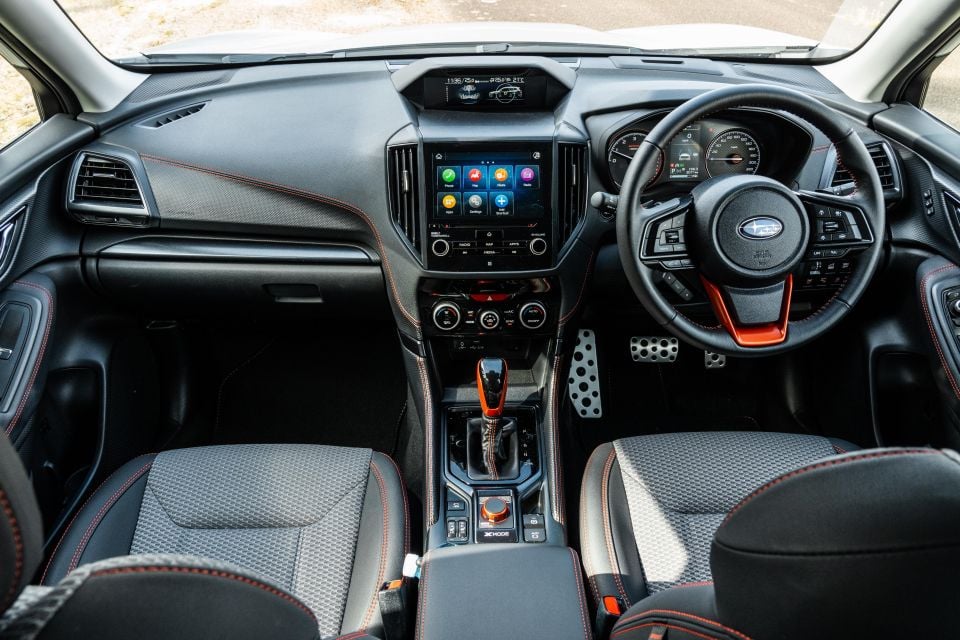
Where high-specification versions of the Forester tend to look a bit demure, with lots of black leather and grey plastic, the Sport combines orange water-repellent fabric with lots of orange stitching to create a very different feel.
The anodised-look orange steering wheel, gear selector, and drive mode dial accents are all unique, as are the little Sport tabs on the door trims.
It’s not for shy or retiring types, but that’s kind of the point here. Well done to Subaru for actually committing to the theme, rather than just slapping a few badges and stickers on the standard cabin and calling it a day.
The fundamentals are solid, as is the case elsewhere in the Forester range. The seats neatly balance softness with support, and with heating and electric adjustment you couldn’t ask for much more. They’re a bit short under-thigh, but that’s a tall person problem.
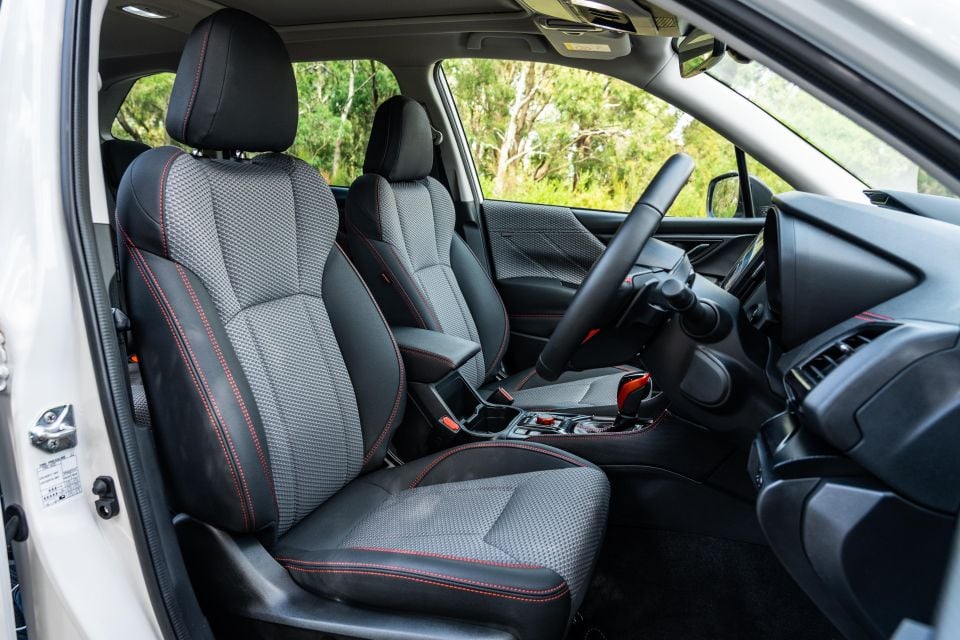
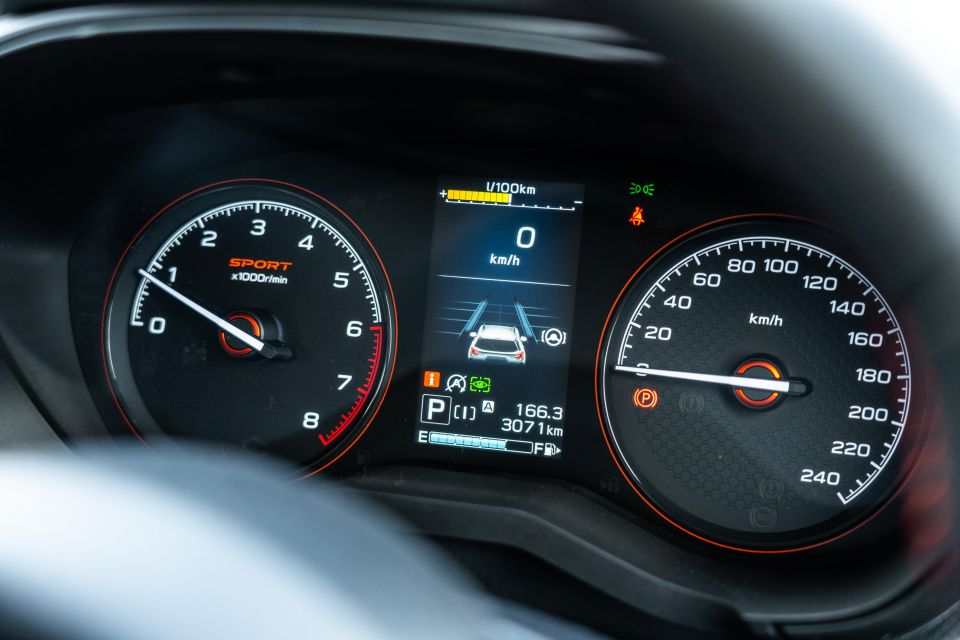
Facing the driver is a chunky, leather-trimmed steering wheel featuring an eye-popping array of buttons. There are 17 on the wheel alone, and that doesn’t include the plastic paddle shifters.
Bundle in controls for the active safety systems down by the driver’s right knee, as well as a trip reset button behind the wheel, and there’s a bit going on.
Thankfully they’re all backlit and clearly labelled, and they’re all proper buttons instead of fiddly touch controls. With time comes familiarity, of course.
The clear analogue dials flank a 4.2-inch trip computer with a huge range of layouts, including a digital speedo.
It partners a slim display atop the dashboard, capable of showing fuel economy, media information, a breakdown of your active safety systems, or details about your all-wheel drive system.
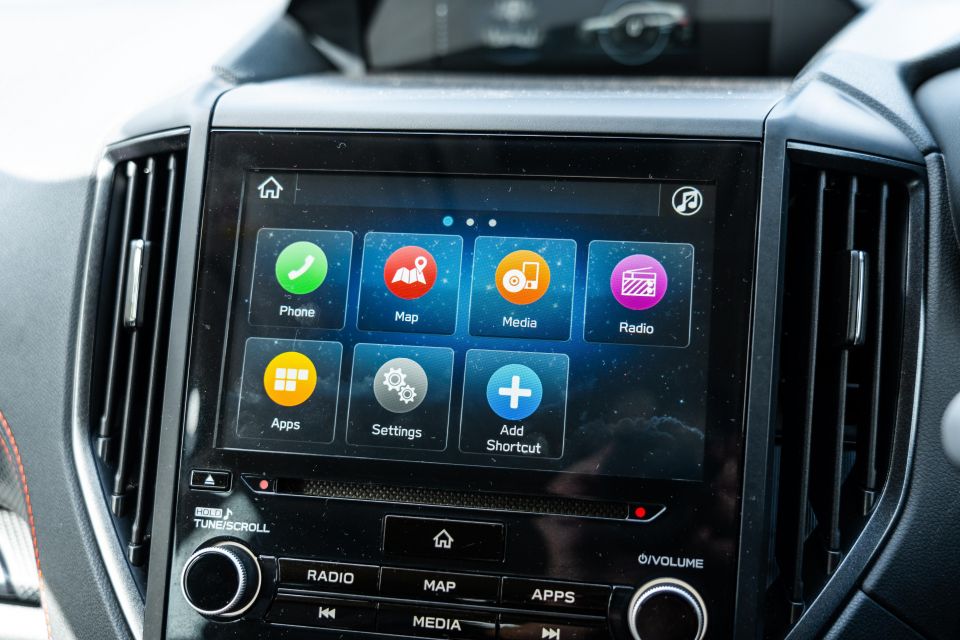
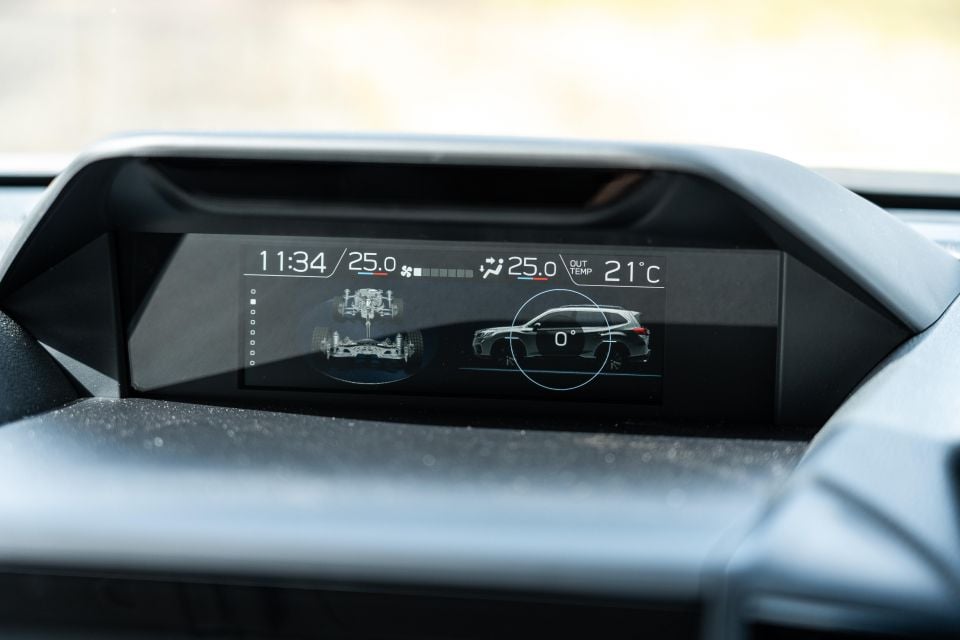
They’re both useful displays, but both have their quirks. You lose your dash-top display in favour of an EyeSight graphic when cruise control in engaged, for example, and unless you’re very particular with how you set the three screens up it’s easy to just have the same information on show in three different places.
Finally, the infotainment system is perfectly functional. Wireless smartphone mirroring would be nice, given it’s rolling out in the Forester’s rivals, but you still get wired Apple CarPlay and Android Auto, and the factory system blends a logical layout with bright, crisp graphics.
It also has factory mapping. The shortcut buttons and volume/tuning dials below the screen are both welcome in a world that’s going touch-only, but the taller screen in the new Outback and upcoming Crosstrek makes the dashboard in the Forester look a bit old.
Like the Outback, the Forester has a facial recognition system. It can remember up to five drivers, and automatically moves the seats and configures the infotainment system when it works out who’s behind the wheel. It also chimes when you take your eyes off the road, which sounds good in theory but tends to jump at shadows in practice.
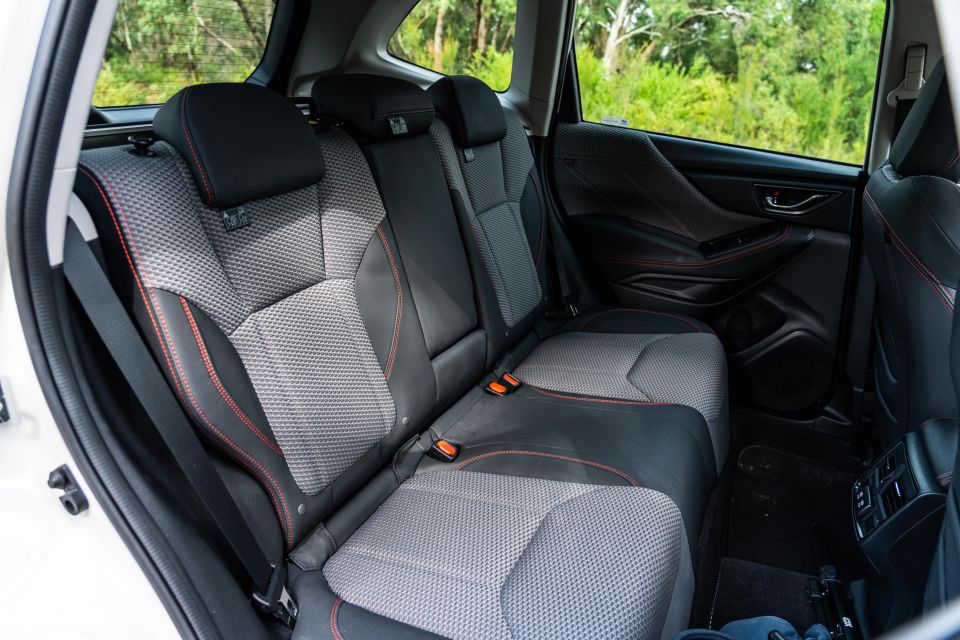
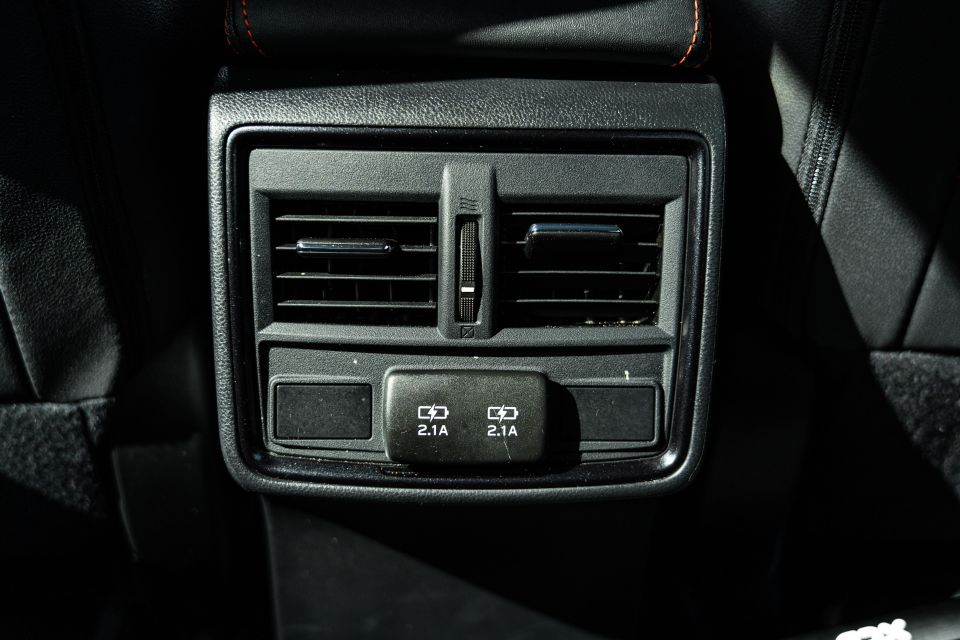
Storage spaces abound up front. There’s a wallet-sized space below the dashboard, two cupholders, a shelf for garage keys, and a deep bin beneath the central armrest. You also get two USB-A ports up front.
The rear seats were a strong point when this Forester generation launched, and time hasn’t changed that. With a tall, boxy roofline and massive windows, it feels much brighter back there than in some of its more style-focused rivals.
Even with a panoramic sunroof fitted, the Forester has enough headroom for tall teens, and legroom is good behind taller adults. The bench itself is plush, and is wide enough for three people to sit across without too much trouble.
You get air vents, two USB ports, a fold-down armrest, and two-tiered pockets behind the front seats, along with door pockets that comfortably swallow a water bottle. Speaking of the rear doors, the fact they open to almost 90 degrees makes it easier to load a child seat into the Forester than some of its rivals.
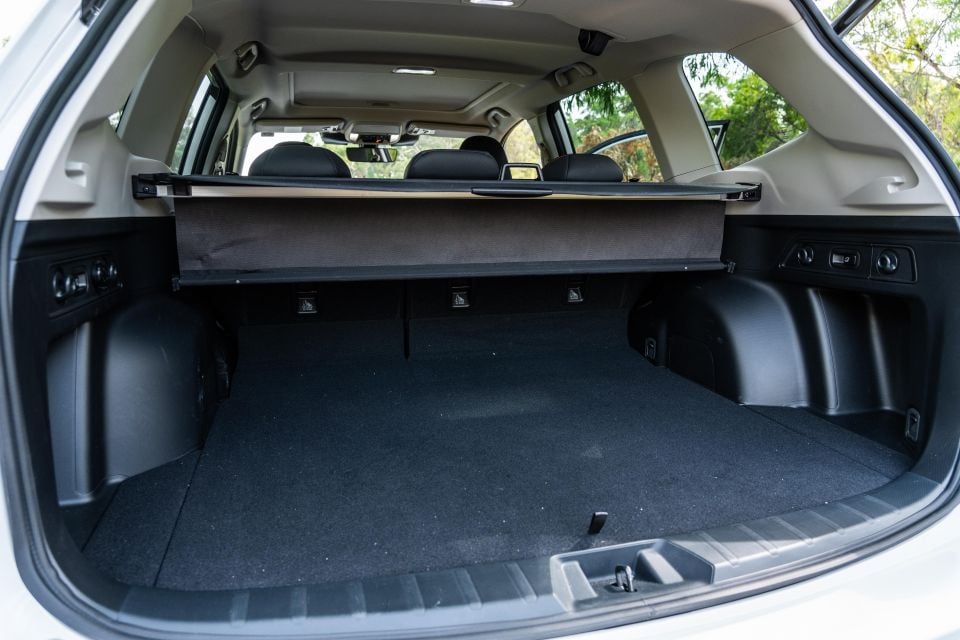
Boot space is 498L with the second row in place, expanding to 1740L with the rear seats folded flat. The low, flat boot floor makes it easy to load bulky or cumbersome items back there, and the boxy body makes fitting big bikes easy.
There’s a full-sized spare wheel under the floor, rather than a space saver or puncture repair kit.
Power in the Forester comes from a 2.5-litre naturally-aspirated petrol four-cylinder ‘boxer’ engine. Although this model is badged ‘Sport’, it doesn’t feature any more power than the standard car.
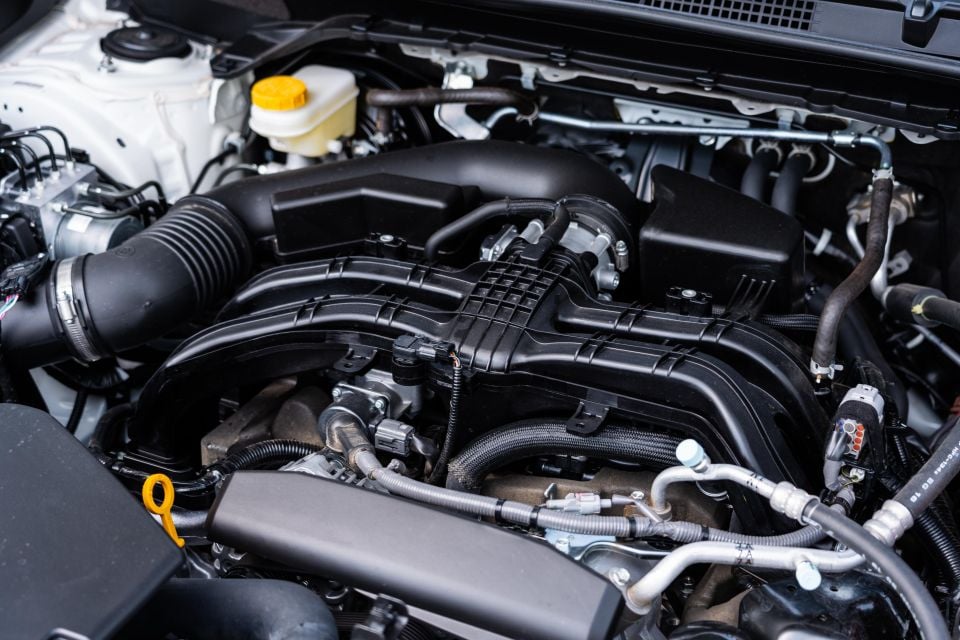
It makes 136kW of power and 239Nm of torque, and is mated exclusively to a continuously-variable transmission (CVT) and all-wheel drive.
A hybrid is also offered on the L and S variants, powered by the combination of a smaller 100kW/196Nm 2.0-litre four-cylinder engine with a 12kW/66Nm electric motor, a lithium-ion battery pack, and a CVT transmission.
The Subaru Forester consumes a claimed 7.4L/100km on the combined cycle, and features a 63-litre fuel tank. It’ll happily drink 91 RON regular unleaded.
The makeover associated with that Sport badge stops here.
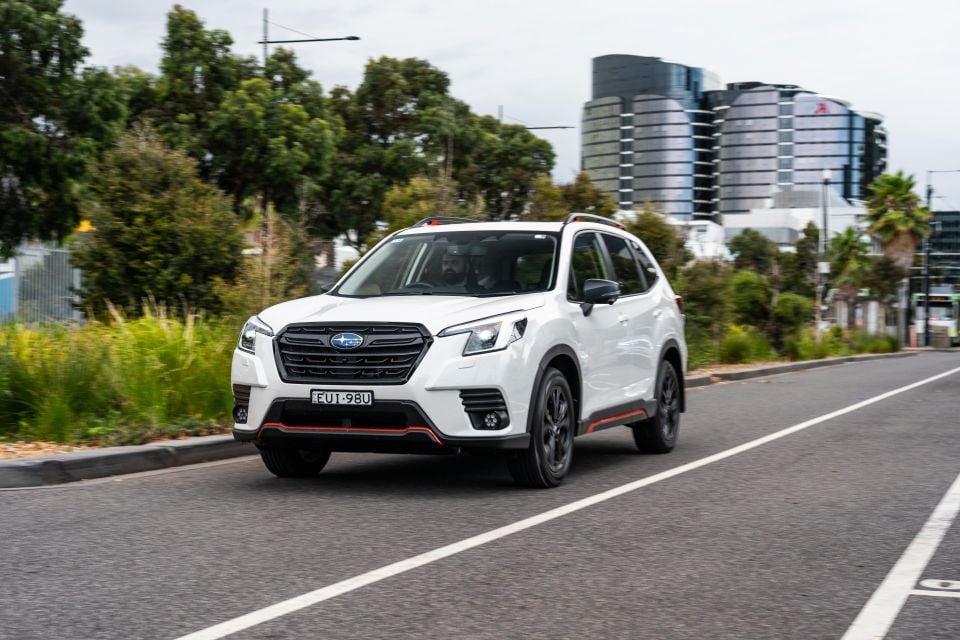
Subaru made changes to the Forester more broadly in 2022, with refined suspension and new engine mounts designed to cut down on vibrations from the boxer engine in the cabin, but it hasn’t gone further for the Sport – sorry, Forester XT fans.
Subaru deserves praise for standing by the boxer, but the Forester’s engine doesn’t have the same offbeat, wobbly character as its predecessors. It’s smooth and quiet at idle, and barely raises its voice when cruising in the city.
Unfortunately, the engine needs to be worked hard if you’re to get anywhere in a hurry, and the CVT means working it hard isn’t particularly pleasant.
Although it pretends to shuffle through gears on light throttle, the CVT holds revs around the 4000rpm mark when you demand more performance, backed by a dull drone from the engine.
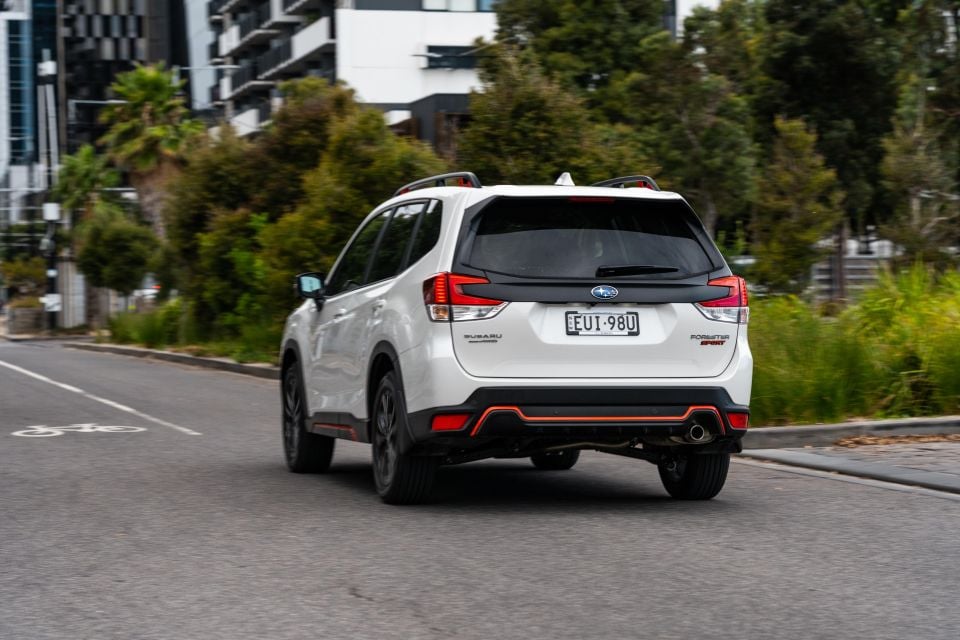
It’s fine for cruising around the city, but when loaded with bags and people at highway speeds there’s no doubt the Forester would benefit from a turbocharged engine with more mid-range torque.
We’ve seen it in the Outback, but the fact the Forester is far more advanced in its lifecycle means it’s unlikely to happen until the next generation.
The steering is perfectly in keeping with other modern Subarus; it’s reasonably direct off-centre, and requires a bit more muscle at low speeds than is the case in some of its rivals.
Of course, it’s light enough for anyone to park without breaking a sweat, and a kerb-side camera (paired with the reversing camera) makes avoiding gutters a breeze.

The ride is a bit firmer than you might expect in other Forester models, given the boxy body doesn’t scream sporty, but it feels in keeping with the Sport exterior and badging. The Forester does a good job softening nasty bumps and potholes.
The firm-ish tune pays off on the highway, where the big Subaru is able to deal with dips and crests in one clean movement, settling down quickly rather than wobbling around.
Wind and road noise are well suppressed on Australia’s typically poor country highways, provided you’re not asking too much of the engine.
Subaru was early to the active driver assist party with EyeSight, its stereo camera-based safety suite. That experience shows in the Forester, which has one of the smoothest and smartest adaptive cruise control systems you’ll find in a mainstream car.

It now features an active steering system designed to actively keep you between the white lines on the highway, rather than sitting dormant until you drift towards the edge of the lane.
It’s activated with a button on the steering wheel, and defaults to on when you start the car.
No doubt it’s handy on super long highway drives, but it was a bit too hands-on for my liking on shorter trips. It also likes to hug the right-hand side of the lane, and will fight the driver if they try to move closer to the centre.
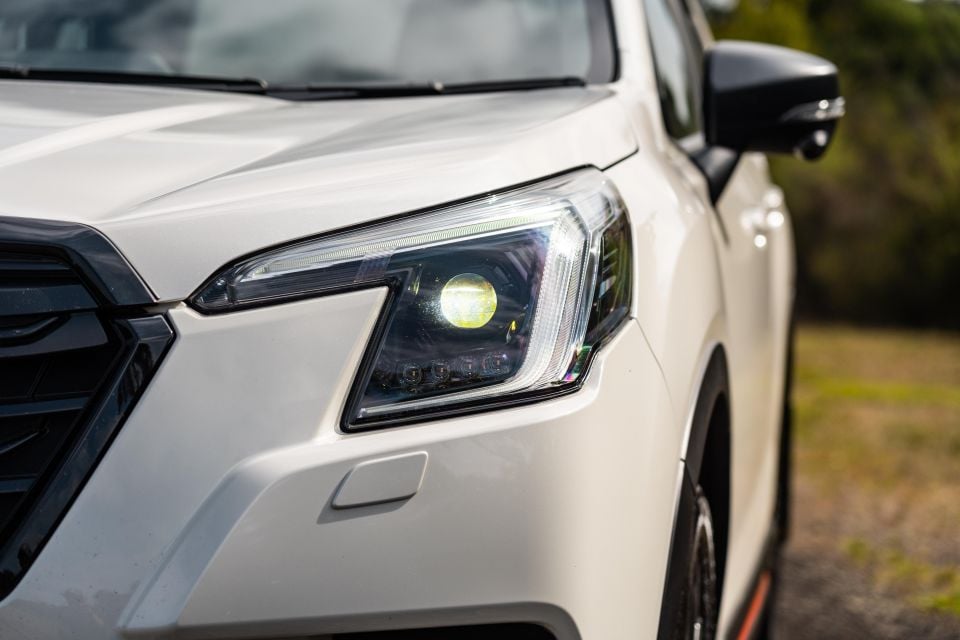
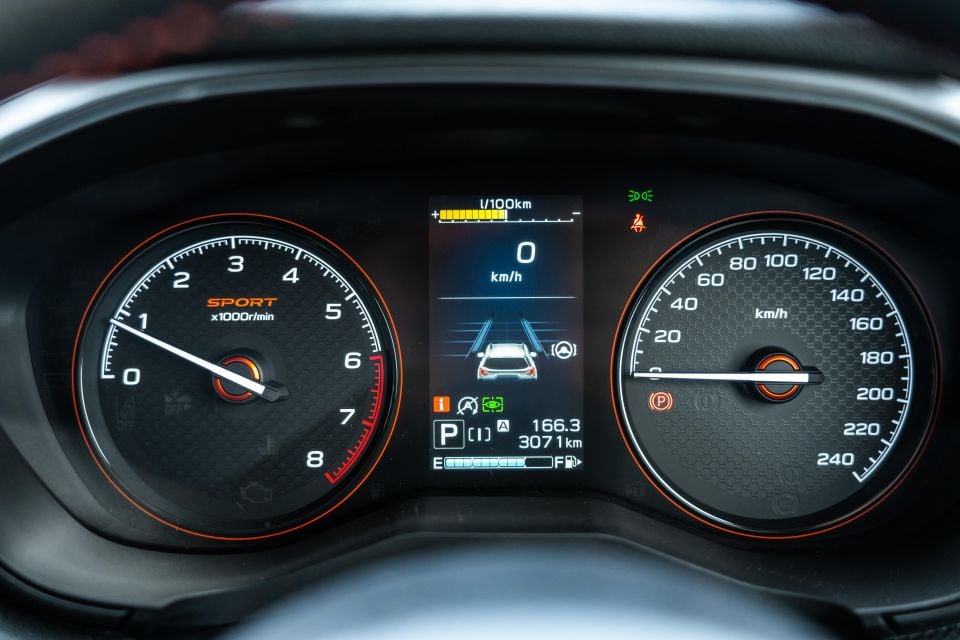
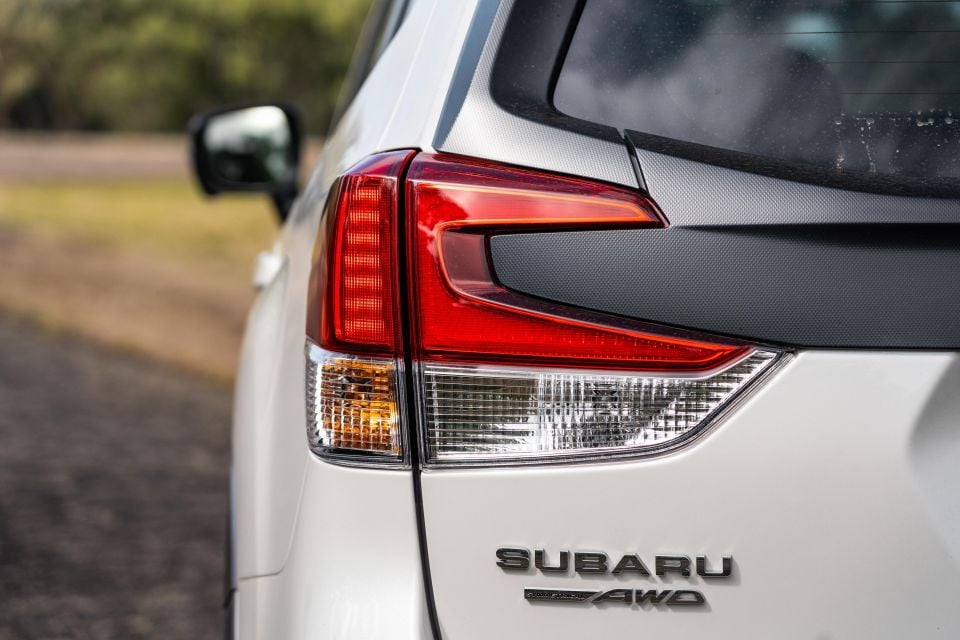

Where expert car reviews meet expert car buying – CarExpert gives you trusted advice, personalised service and real savings on your next new car.
Forester 2.5i highlights:
Forester 2.5i-L + Hybrid L add:
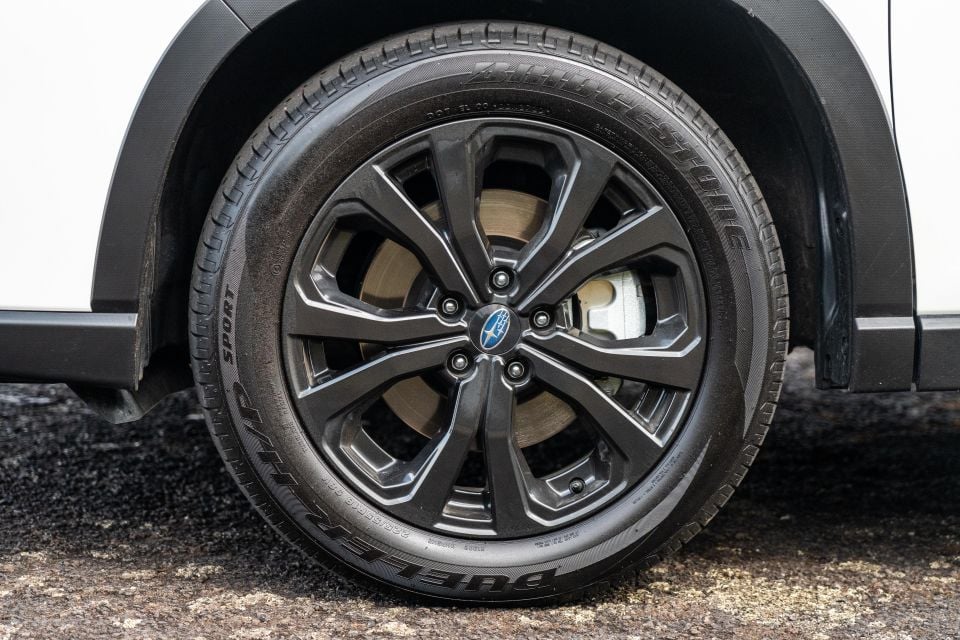
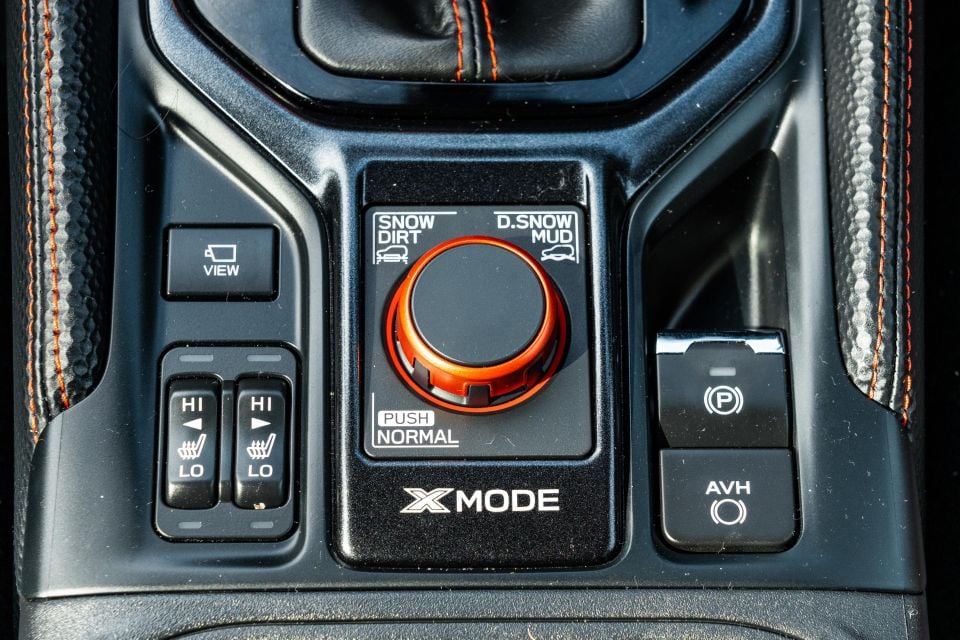
Forester 2.5i Premium adds:
Forester 2.5i Sport adds:
ANCAP awarded the Subaru Forester a five-star safety rating in 2019.

That’s based on scores of 94 per cent for adult occupant protection, 86 per cent for child occupant protection, 80 per cent for vulnerable road user protection, and 78 per cent for safety assist.
Standard safety equipment includes:
All bar the base 2.5i come standard with a facial recognition camera to detect driver drowsiness or distraction, as well as rear AEB.
The Forester is covered by a five-year, unlimited-kilometre warranty.
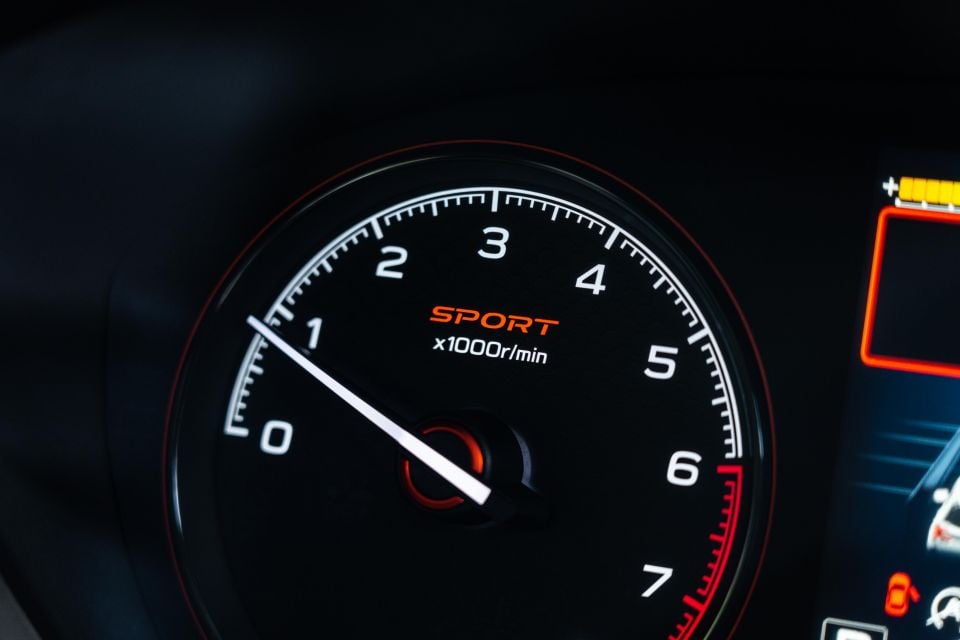
Subaru offers three- and five-year pre-paid servicing plans.
For non-hybrid models they cost $1277.90 and $2422.38 respectively, while the Hybrid’s cost $1288.24 and $2439.60.
The Sport doesn’t do much to improve on the formula laid down by the existing Forester range, but it doesn’t do anything to take away from it either.
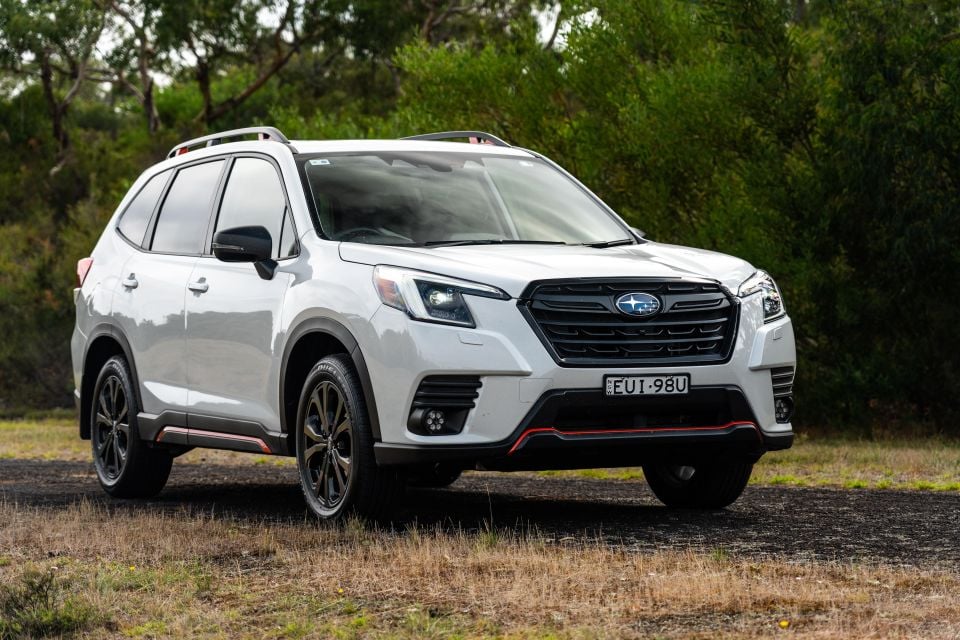
It’s still comfortable and quiet, with the all-wheel drive security Subaru buyers expect, although its newer rivals have it covered on the performance front. If you’re in a hurry, the Outback XT Turbo is well worth a look.
There aren’t many better mid-sized SUVs if you’re constantly loading kids into child seats or need to carry a growing family, and there’s no doubt the Sport stands out from the crowd with its racier looks. The cabin is an acquired taste, though.
While we’re complaining, some of the active driver assists are good ideas in need of some refining. It’s also strange Subaru hasn’t included a wireless phone charger.
But for the most part, the Forester remains a solid, smartly-priced player in a busy segment.
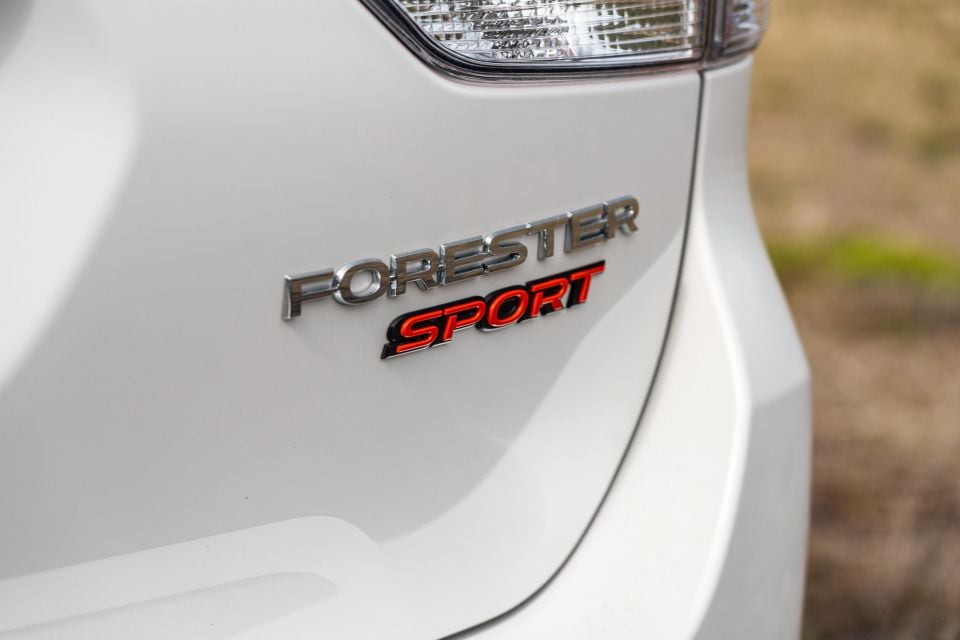
Click the images for the full gallery
Where expert car reviews meet expert car buying – CarExpert gives you trusted advice, personalised service and real savings on your next new car.
Scott Collie is an automotive journalist based in Melbourne, Australia. Scott studied journalism at RMIT University and, after a lifelong obsession with everything automotive, started covering the car industry shortly afterwards. He has a passion for travel, and is an avid Melbourne Demons supporter.


Max Davies
4 Hours Ago


William Stopford
20 Hours Ago


Ben Zachariah
21 Hours Ago


Derek Fung
21 Hours Ago


Matt Campbell
1 Day Ago


William Stopford
2 Days Ago